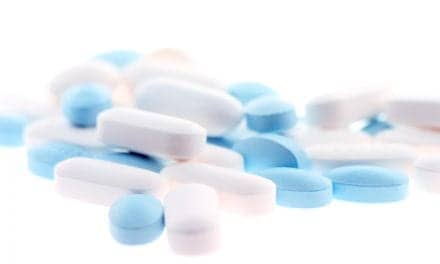The US FDA has approved Dupixent (dupilumab) for use with other medicines to treat chronic rhinosinusitis with nasal polyposis (CRSwNP) in adults whose disease is not controlled, according to Regeneron Pharmaceuticals and Sanofi.
Dupixent (300 mg) is administered as a subcutaneous injection every other week by either a healthcare professional or self-administration (after training by a healthcare professional).
CRSwNP can be a debilitating condition, with many patients opting for systemic steroids or nasal surgery, which often cannot control this disease. Moreover, CRSwNP often occurs in combination with severe asthma.
“Dupixent is the first FDA-approved medicine for adults with chronic rhinosinusitis with nasal polyposis, and the only approved therapy shown to shrink nasal polyp size and also improve the signs and symptoms of the associated chronic rhinosinusitis. In fact, approximately three-quarters of patients treated with Dupixent no longer required either corticosteroids or surgery, the current standards of care,” said George D. Yancopoulos, MD, PhD, President and Chief Scientific Officer at Regeneron. “Importantly, many patients with CRSwNP also suffer from asthma, and Dupixent was shown to improve lung function in these patients as well. This approval further reinforces that IL-4 and IL-13 are key drivers of type 2 inflammation, and we continue to study Dupixent in other type 2 inflammatory diseases, including eosinophilic esophagitis, and food and environmental allergies.”
The FDA evaluated the CRSwNP Dupixent application under Priority Review, which is reserved for medicines that represent potentially significant improvements in efficacy or safety in treating serious conditions.
Dupixent is a fully-human monoclonal antibody that inhibits the signaling of interleukin-4 (IL-4) and interleukin-13 (IL-13), two proteins that play a central role in type 2 inflammation. Data from Dupixent clinical trials have shown that inhibiting IL-4 and IL-13 helps address the type 2 inflammation that plays a major role in CRSwNP, asthma and atopic dermatitis.
“Chronic rhinosinusitis with nasal polyposis can be a debilitating condition. Today’s standard of care – which includes intranasal and systemic corticosteroids and sinus surgery – often leaves patients with CRSwNP with recurring symptoms,” said John Reed, M.D., Ph.D., Head of Research and Development at Sanofi. “In two Phase 3 trials, Dupixent helped patients significantly reduce their nasal congestion, and many patients experienced significant improvement in their sense of smell in as quickly as four weeks. Treatment with Dupixent also reduced the need for systemic steroids and surgery, and led to improvements in health-related quality of life. Importantly, these patients with co-morbid asthma now have a treatment that can help improve their breathing.”
CRSwNP is a chronic disease of the upper airway that obstructs the sinuses and nasal passages. It can lead to breathing difficulties, nasal congestion and discharge, reduced or loss of sense of smell and taste, and facial pressure. Many patients with CRSwNP have other type 2 inflammatory diseases like asthma, and these patients often have more severe asthma and are often more difficult to treat. In the Dupixent CRSwNP trials, 59% of patients also had asthma. These co-morbid diseases can lead to an increased risk of asthma attacks, high symptom burden and a substantial adverse impact on health-related quality of life.
The FDA approval is based on two pivotal trials (the 24-week SINUS-24 and 52-week SINUS-52) that are part of the Phase 3 LIBERTY clinical trial program. These trials evaluated Dupixent 300 mg every two weeks with standard-of-care mometasone furoate nasal spray (MFNS) compared to placebo injection plus MFNS. In these trials, Dupixent significantly improved key disease measures and met all primary and secondary endpoints. At 24 weeks, patients treated with Dupixent achieved statistically significant improvements in all primary and secondary endpoints, including:
- Co-primary endpoints:
- 57% and 51% improvement in their nasal congestion/obstruction severity compared to a 19% and 15% improvement with placebo in SINUS-24 and SINUS-52, respectively (least squares [LS] mean change from baseline of -1.34 and -1.25 for Dupixent compared to -0.45 and -0.38 for placebo; difference between Dupixent and placebo: -0.89 and -0.87).
- 33% and 27% reduction in their nasal polyps score compared to a 7% and 4% increase with placebo in SINUS-24 and SINUS-52, respectively (LS mean change from baseline of -1.89 and -1.71 for Dupixent compared to 0.17 and 0.10 for placebo; difference between Dupixent and placebo: -2.06 and -1.80).
- Secondary endpoints:
- 42% and 27% improvement in sinus opacification compared to 4% and 0% with placebo in SINUS-24 and SINUS-52, respectively (LS mean change from baseline of -8.18 and -5.21 for Dupixent compared to -0.74 and -0.09 for placebo).
- 52% and 45% improvement in loss of smell compared to a 12% and 10% improvement for placebo in SINUS-24 and SINUS-52, respectively (LS mean difference in Dupixent compared to placebo of -1.12 and -0.98 in SINUS-24 and SINUS-52, respectively).
In a pre-specified pooled analysis of the two trials up to 52 weeks, Dupixent treatment resulted in a significant reduction of systemic corticosteroid use and the need for sino?nasal surgery compared to placebo.
- The proportion of patients who required systemic corticosteroids was reduced by 74% with Dupixent compared to placebo.
- The proportion of patients who required surgery was reduced by 83% with Dupixent compared to placebo.
In the 59% of patients who also had asthma, the improvements in lung function were similar to patients in the Dupixent asthma program.
Treatment effects on nasal congestion and loss of smell were observed with the first assessment as early as 4 weeks and showed continued improvement for the duration of the trial. In the 52 week SINUS-52 trial, patients continued to do well through the 52 week treatment period.
In the CRSwNP clinical trials, adverse events that occurred in at least 2% of Dupixent patients and greater than placebo were injection site reactions (6% Dupixent, 4% placebo), conjunctivitis (2% Dupixent, 1% placebo), arthralgia (3% Dupixent, 2% placebo) and gastritis (2% Dupixent, 1% placebo).










